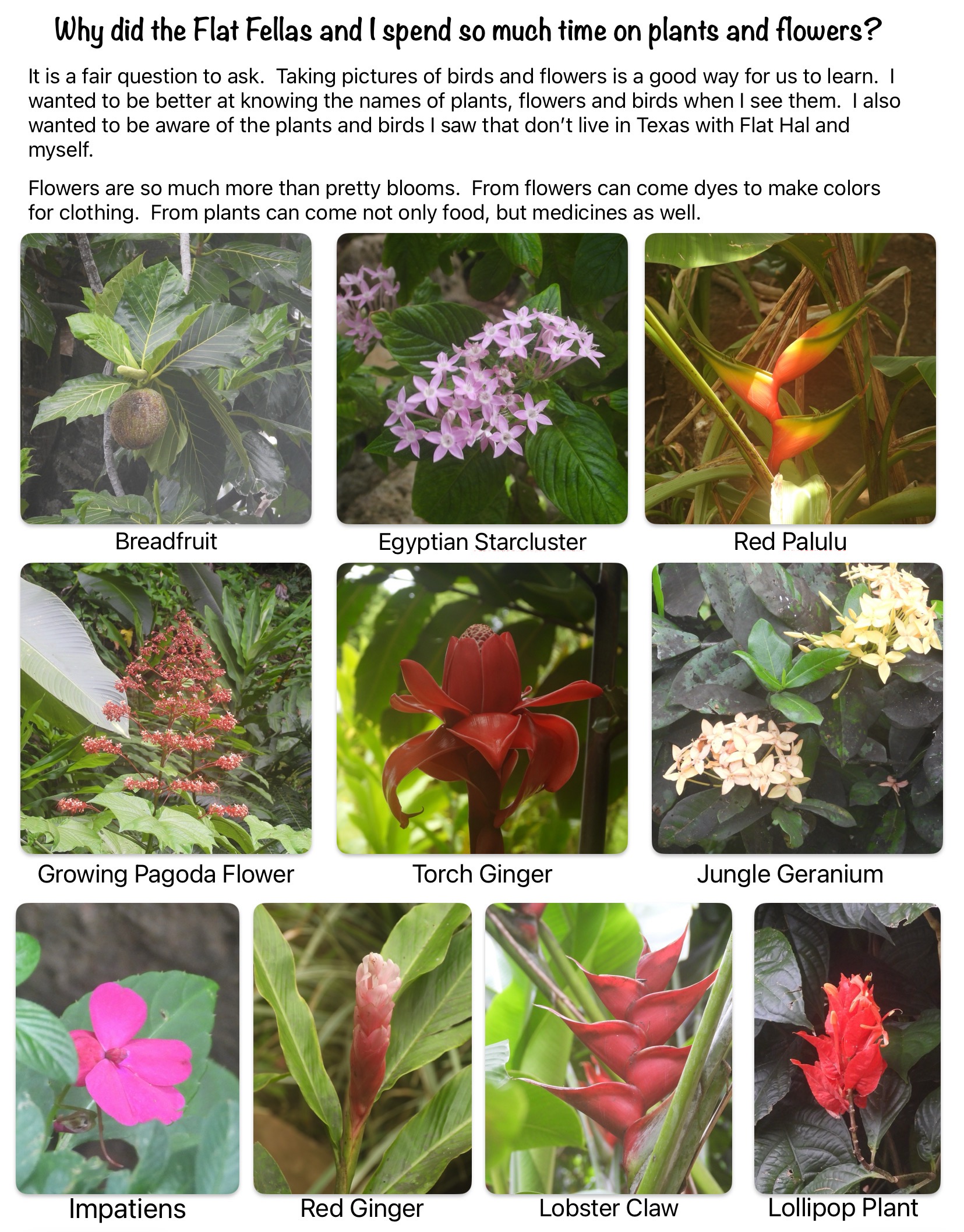It is a fair question to ask. Taking pictures of birds and flowers is a good way for us to learn. I wanted to be better at knowing the names of plants, flowers and birds when I see them. I also wanted to be aware of the plants and birds I saw that don’t live in Texas with Flat Hal and myself.
Flowers are so much more than pretty blooms. From flowers can come dyes to make colors for clothing. From plants can come not only food, but medicines as well.










Experiment with dyeing yarn interesting colors using flowers
Here’s a simple and engaging experiment to demonstrate natural dyeing with flowers:
Materials:
White yarn: Wool or silk work best, but cotton can also be used.
Flowers: Marigolds, dandelions, or other brightly colored flowers.
Small jars or containers: One for each color of flower.
Hot water: Enough to fill the jars.
Vinegar: White vinegar works best.
Spoons: For stirring.
Optional: Rubber gloves to protect little hands.
Procedure:
Prepare the dye:
Have the students help separate the flowers into different containers based on their color.
Pour hot water over the flowers to fill the jars.
Add a tablespoon of vinegar to each jar.
Stir gently and let the flowers steep for at least 30 minutes (longer steeping times will result in deeper colors).
Prepare the yarn:
Cut the yarn into manageable lengths for each student.
Dye the yarn:
Once the dye is ready, have the students carefully place their yarn into the jars, making sure it’s fully submerged.
Let the yarn soak for at least an hour, or even longer for a more intense color.
Rinse and dry:
Remove the yarn from the dye bath and gently rinse it with cool water until the water runs clear.
Hang the yarn to dry.
Explanation:
This experiment demonstrates how the natural pigments in flowers can be extracted using hot water and vinegar. The vinegar helps to set the dye, making the color more permanent. The longer the yarn soaks in the dye bath, the more intense the color will become.
Tips:
Encourage students to experiment with different types of flowers and different steeping times to see how it affects the color of the yarn.
You can also use this experiment to dye other materials, such as fabric scraps or paper.
Safety:
Supervise young children closely when working with hot water.
Remind students not to put the flowers or yarn in their mouths.
If using rubber gloves, make sure they are the correct size for small hands.
Here are some native flower suggestions for the dyeing experiment from a few places (per Gemini AI):
Prince Edward Island:
Ox-eye Daisy (Leucanthemum vulgare): Abundant and provides a cheerful yellow dye.
Goldenrod (Solidago spp.): Very common, offering shades of yellow and gold.
Black-eyed Susan (Rudbeckia hirta): Yields lovely yellows and oranges.
Important Note for PEI: Always be mindful of conservation and avoid picking endangered species like the Lady’s Slipper.
Ontario, Canada:
New England Aster (Symphyotrichum novae-angliae): Produces beautiful purples and blues.
Butterfly Weed (Asclepias tuberosa): Offers vibrant oranges.
Wild Bergamot (Monarda fistulosa): Can create lovely reddish-purple hues.
Austin, Texas:
Texas Bluebonnet (Lupinus texensis): The state flower! It can give you blues and purples (though it might be best to admire these and not pick them).
Indian Blanket (Gaillardia pulchella): Provides vibrant reds and yellows.
Purple Coneflower (Echinacea purpurea): Offers a range of purples.
Important Considerations:
Seasonality: Make sure to choose flowers that are in bloom when you plan to do the experiment.
Sustainability: Teach students about responsible foraging. Only pick flowers where they are abundant, and never take more than you need. Consider growing some dye flowers in the classroom or school garden.
Allergies: Be aware of any potential allergies students may have to certain flowers.



